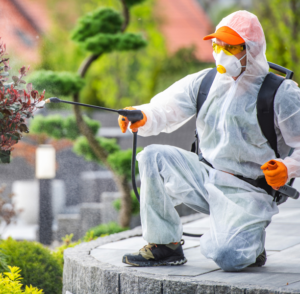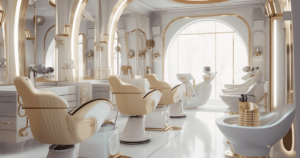Creating a functional, well-kept landscape improves your home’s value and provides health benefits. It also reduces stress and anxiety.

Focal points draw the eye throughout the landscape. They can also frame desirable views from inside the house. Simple repetition creates cohesion and visual interest, for example lining up three identical columns on an arbor or placing similar plant material in a row.
A beautifully designed landscape can greatly increase the appeal and value of your home or business, as well as create a comfortable outdoor living area for family and friends. A well-designed landscape will incorporate a combination of hardscape (man-made features such as patios and walkways) and softscape (living organic features such as trees, flowers, shrubs and grasses).
The design of landscaping can be as simple or complex as you want. A professional can help you achieve your goals by analyzing the existing topography and incorporating it into your plan. They will also test the soil and advise you of which plants are suitable for your site.
Form themes are a great way to bring cohesion and unity to your landscape. This may be done by combining elements and features of a particular style or using repetition of the same shape to achieve visual weight. For example, using a circle shape for plant beds and pavers creates consistency. Themes can also be based on colors, such as a warm or cool palette.
Texture is another important element of landscape design. Different foliage, bark and flower colors can provide a range of textures that add interest to your garden. The use of varying textures in your plantings can also add dimension and create focal points.
Water management is a big part of landscaping, and should be taken into consideration when creating your design. It’s vital to have good drainage to prevent flooding and erosion. Landscapers can help you with this by designing water drainage systems that will reduce the amount of stormwater runoff and reroute it to other areas of your property.
Landscaping improves the quality of life in cities by reducing carbon dioxide levels and promoting healthier air, by removing harmful chemicals from the environment and by filtering and purifying the water that is used for drinking, cooking and bathing. In addition, the planting of trees helps to reduce greenhouse gases, which contribute to global warming, by absorbing nitrogen oxides and carbon dioxide, as well as releasing oxygen into the atmosphere.
To help you get started, look around your neighborhood and observe the landscapes of other homes and businesses. Try to find a style that you like and take notes. Then, research the specifics of that design and how you might implement it on your own property.
Form
A well-designed landscape can increase your property value. It can also provide mental and physical benefits by reducing stress levels. Studies show that simply stepping outside and looking at plants can lower blood pressure. Spending time in nature is also known to reduce anxiety and improve attention and memory. A beautifully landscaped yard is also a great way to enjoy your outdoor space and entertain guests.
Form is the visual appearance of three-dimensional elements in the landscape including bushes, garden beds and hardscaping structures like walkways and patios. It can be formal or naturalistic and it can define negative space in a landscape or tie different elements together. Form can also include circular, elliptical and curvilinear shapes.
Shape is an important design element because it is one of the enduring qualities that remain throughout a single growing season. Plants come in all shapes and sizes, but shape is also influenced by height, width, color and texture. A well-designed landscape will use repetition of shape to create unity and balance while using contrast to avoid monotony.
Texture is a fundamental aspect of the landscape and refers to how rough or smooth, light or dark a surface is. Texture is important because it influences how a space feels and how it moves through a garden. A landscape that features a lot of bold textures can appear dramatic and formal, while a space with lots of fine or soft textures will look more natural and relaxed.
Landscaping can be done on a large or small scale and involves both the structure and the planting of plants, trees and other vegetation. It can include hardscaping and softscaping, as well as water features such as fountains, ponds and waterfalls. It can also include ornamental grasses and shrubs, and structural elements such as fences and trellises.
Function
A well-designed and maintained landscape can increase a property’s value, reduce stress, and provide a pleasant outdoor living space for families and guests. It can also encourage people to spend time outdoors, which has been shown to improve mental health and increase happiness. In addition, landscaping can help reduce water runoff and soil erosion in areas with heavy rainfall. The use of native plants and trees helps preserve the environment by reducing the need for chemicals.
The function of landscaping includes the design and installation of outdoor features such as walks, driveways, fences, walls, pools, patios, and gardens. Landscaping also involves planting and maintaining trees, shrubs, grasses, flowers, and turfgrass. In addition, landscapers may create hardscape features such as retaining walls and walkways using a variety of materials, including stones, wood, concrete, and brick. They may also incorporate waterscapes such as ponds and waterfalls to add interest and beauty to the property.
Landscaping can also be used to enhance the appearance of buildings by softening their architectural lines and creating a balanced layout between man-made structures and natural elements. This can be achieved by incorporating the right plants, flowers, and trees to match the style of the building and create a sense of harmony.
Another function of landscape is to reduce noise pollution from nearby roads, airports, and schools by introducing vegetation that absorbs and muffles sound. It can also improve air quality by removing dust and pollutants from the atmosphere. It can also promote physical activity by encouraging individuals to walk, jog, or exercise in parks and gardens.
Many communities and businesses have adopted landscaping practices to benefit the local environment and enhance their public image. In urban areas, for example, a well-maintained and attractive public landscape can lower crime rates and improve the overall quality of life. This is especially true in areas with high populations, where the presence of green spaces can reduce stress and anxiety levels among residents.
Proper landscaping can increase a home’s market value by making it more appealing to potential buyers. It can also reduce the amount of time a house is on the market by improving its curb appeal and adding functionality. In addition, studies have shown that spending time in nature can improve memory, reduce anxiety, and boost happiness levels.
Color
Color is one of the most exciting tricks up a gardener’s sleeve, but it can also be challenging to work with. It can unify a design, draw attention to a focal point, and make small spaces feel larger. The key to incorporating color successfully into your landscape is understanding the principles of color theory.
Color theory is the study of how different colors interact with one another. It explains how primary colors (blue, red, yellow) combine to create secondary colors (purple from blue and red, green from blue and yellow), and how tertiary colors are created by mixing a primary and a secondary together (yellow-orange, red-orange). A handy visual tool for learning these principles is the color wheel. Visual artists and landscape designers use it to ensure that colors are complementary and cohesive in their work.
The most common color schemes in landscaping are analogous, monochromatic, and contrasting. Analogous means that the colors are directly next to each other on the color wheel, and it’s easy to find flowering plants and shrubs in those shades. Opposite colors on the wheel are called complementary, and they create vibrant contrast in the landscape.
For a more subtle look, try a monochromatic color scheme. Using tints and shades of the same color creates an elegant, cohesive landscape. For example, choosing the same shade of purple across the entire yard can create a serene, relaxing atmosphere.
Another way to find great landscape color ideas is to look at neighborhood and community landscapes. Pay attention to the colors that catch your eye, and see if you can figure out why those colors are so attractive.








